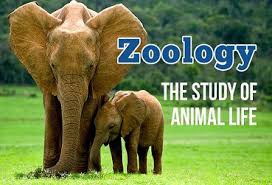W.B.C.S. Examination Notes On – Mutations And The Environment – Zoology Notes.
UV light can also cause covalent bonds to form between adjacent pyrimidine bases on a DNA strand, which results in the formation of pyrimidine dimers. Repair machinery exists to cope with these mutations, but it is somewhat prone to error, which means that some dimers go unrepaired. Furthermore, some people have an inherited genetic disorder called xeroderma pigmentosum (XP), which involves mutations in the genes that code for the proteins involved in repairing UV-light damage. In people with XP, exposure to UV light triggers a high frequency of mutations in skin cells, which in turn results in a high occurrence of skin cancer. As a result, such individuals are unable to go outdoors during daylight hours.
In addition to ultraviolet light, organisms are exposed to more energetic ionizing radiation in the form of cosmic rays, gamma rays, and X-rays. Ionizing radiation induces double-stranded breaks in DNA, and the resulting repair can likewise introduce mutations if carried out imperfectly. Unlike UV light, however, these forms of radiation penetrate tissue well, so they can cause mutations anywhere in the body.
Mutations Caused by Chemicals
Deamination, or the removal of an amine group from a base, may also occur. Deamination of cytosine converts it to uracil, which will pair with adenine instead of guanine at the next replication, resulting in a base substitution. Repair enzymes can recognize uracil as not belonging in DNA, and they will normally repair such a lesion. However, if the cytosine residue in question is methylated (a common modification involved in gene regulation), deamination will instead result in conversion to thymine. Because thymine is a normal component of DNA, this change will go unrecognized by repair enzymes.
Mutations, DNA Repair, and Evolution
Thus, mutations are not always a result of mutagens encountered in the environment. There is a natural—albeit low—error rate that occurs during DNA replication. In most cases, the extensive network of DNA repair machinery that exists in the cell halts cell division before an incorrectly placed nucleotide is set in place and a mismatch is made in the complementary strand. However, if the repair machinery does not catch the mistake before the complementary strand is formed, the mutation is established in the cell. This mutation can then be inherited in daughter cells or in embryos (if the mutation has occurred in the germ line).
Together, these different classes of mutations and their causes serve to place organisms at risk for disease and to provide the raw material for evolution. Thus, mutations are often detrimental to individuals, but they serve to diversify the overall population.
Please subscribe here to get all future updates on this post/page/category/website


 Toll Free 1800 572 9282
Toll Free 1800 572 9282  mailus@wbcsmadeeasy.in
mailus@wbcsmadeeasy.in



















































































































